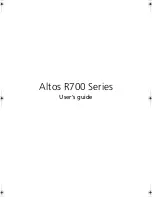
References
Medialon MAS Pro Dante User Manual
p 62 of 88
M516-2 | 2020-05-19
Network recommendations
Make certain that your network is using good quality components and is running Gigabit
throughout. This helps reducing latency and increases bandwidth flexibility.
As a rule of thumb, a separate dedicated Dante network is recommended for critical, high channel-
count applications.
Audio Formats
Different Dante devices may support different audio formats. Most Dante devices support either
48 kHz 24-bit PCM or 96 kHz 24-bit PCM. Some devices can be switched between 48 kHz and
96 kHz, but will not support both at once.
It is only possible to set up a route between channels which have a common audio format.
Channels having incompatible formats will not be routable.
Note
: The MAS Pro Dante Audio Format is 48 kHz 16-bit (‘D’ and ‘DC’ models) or 24-bit (‘DC’
models only).
Flows
Dante audio routing creates ‘flows’. Each flow carries one or more channels of audio from a
transmitting device to one or more receiving devices. There are two types of flow, unicast and
multicast.
Unicast routing creates flows to a single receiving device; a unicast flow typically assigns space for
4 channels of audio. Unicast flows are setup when a receiver subscribes to an available audio
channel and are automatically removed when the receiver unsubscribes from all channels in that
flow.
Multicast routing creates flows that can be received by multiple receivers. Multicast flows are
assigned IDs enabling them to be identified and to facilitate their removal. In contrast to unicast
flows, multicast flows must be set up on the transmitting Dante device before receivers can
subscribe to these flows.
Advanced Routing: Using Multicast
Dante routing is unicast by default. This means that a separate flow is set up between each
transmitter and receiver. If several receivers are all subscribed to the same channels of a
transmitter, it may sometimes be more efficient to use multicast.
Multicast sends the same set of channels to multiple receivers. In practice, this usually means that
the audio flow is flooded throughout the network. If many receivers want the same channels,
















































